trees and a driveway drawing
Planning a new driveway design? There are some crucial things you'll need to consider first. A must-have feature of many front yards, driveways are more than just practical – the best ones will boost the curb appeal of your plot too, and create a great first impression.
Whether you're replacing existing driveway ideas that are looking a little lackluster or building a new one from scratch, you'll want to ensure that the project ends up a success. After all, they're not always the quickest or cheapest features to install, so you'll want to get it right first time. And with this guide, we can help.
5 steps to perfect driveway design
We've rounded up five top things to bear in mind when designing a driveway for your outdoor space.
1. Work out the shape and size of your driveway
First, you'll want to decide on the shape and size of your driveway in relation to the rest of your front garden ideas.
Of course, there are plenty of practical factors to consider here. For starters, you'll need it to be wide enough to fit your vehicles – both yours and potential guests' – with room on either side for getting in and out easily. If you're going to include a gate, you'll need to allow room for it to open, too. If you've got a very large front yard, you may even want to provide enough room to turn vehicles around.
Shape-wise, think about whether you want a simple and straight drive or a curved one. If you have an existing garage, you may wish to create the most efficient route to it from the road. Any large, existing trees that you need to work around may also play a part in the layout of the shape.
It's always a good idea to check with your local planning office to ensure you're meeting any legal requirements with your driveway design, too. For instance, Cass Heaphy of Paving Direct (opens in new tab) explains how UK building regulations stipulate a minimum width of 3.3m (10.8ft) for lone-access driveways and 2.5m (8.2ft) where a separate means of access – such as a footpath – is present.
There is also the gradient to consider. 'You want the driveway to drain surface water within the boundary of your property, so to achieve this, the driveway will need a gentle gradient called the "fall",' explains Cass. The fall should be between a 1:60 and 1:80 gradient and direct the run-off somewhere suitable (more on this below). Bear in mind that the gradient will also affect traction in icy or cold weather conditions, he adds. 'If your surface material is too smooth and too steep, you may not be able to use the drive in certain weather conditions.'
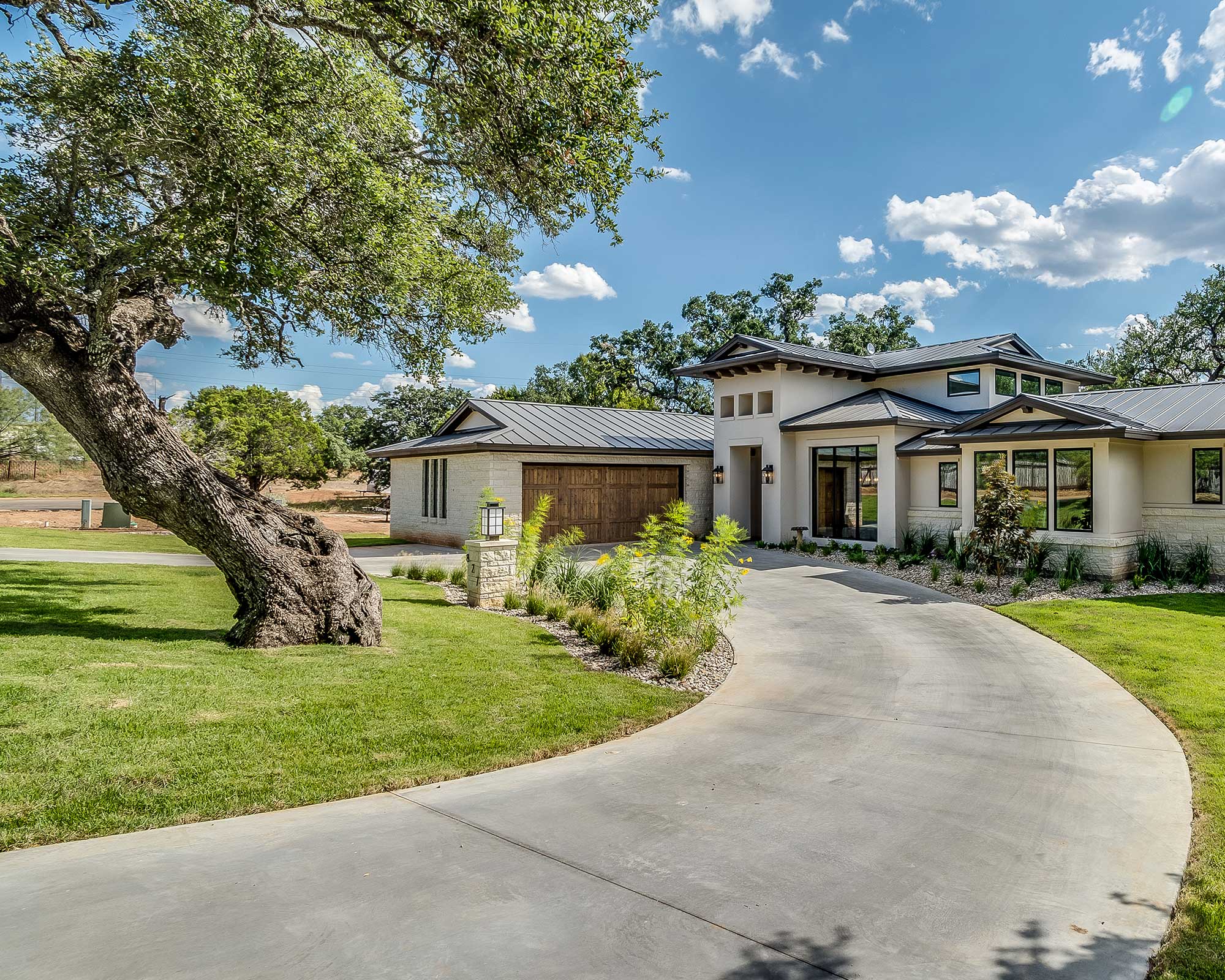
This driveway elegantly curves around a tree
(Image credit: PC Photography/iStock/Getty Images Plus/Getty Images)
2. Choose the best materials for your space
The surface material of your driveway will affect both how practical it is and how it looks in your space. And there are lots of options to choose from.
To help you decide, you'll want to think about your budget: some materials are much more expensive than others. The cheapest to use will be a decorative aggregate (flint gravel, limestone chippings, etc.,) laid over compacted hardcore (MOT Type 1), as says Cass. Gravel driveway ideas are popular for many reasons, but there are a few drawbacks to consider: 'they offer poor footing, and in wet conditions will likely transfer moisture and dirt to footwear more easily,' he says. 'Likewise, they make access with prams, wheelchairs, and bikes more difficult, where a hard surface would offer better performance.'
If you want a hard surface instead, the cheapest option can be done with driveway concrete blocks, Cass advises. 'The most expensive options will be natural stone setts or blocks, or porcelain setts.'
It's also important to factor in the costs of installation if you're hiring a pro. 'The cost of installation is 60–70% labor and 30–40% materials,' says Cass, 'so focusing on the materials alone will not equate to a cost reduction. If you're planning to do this as a DIY project – ask yourself what your own time is worth too.'
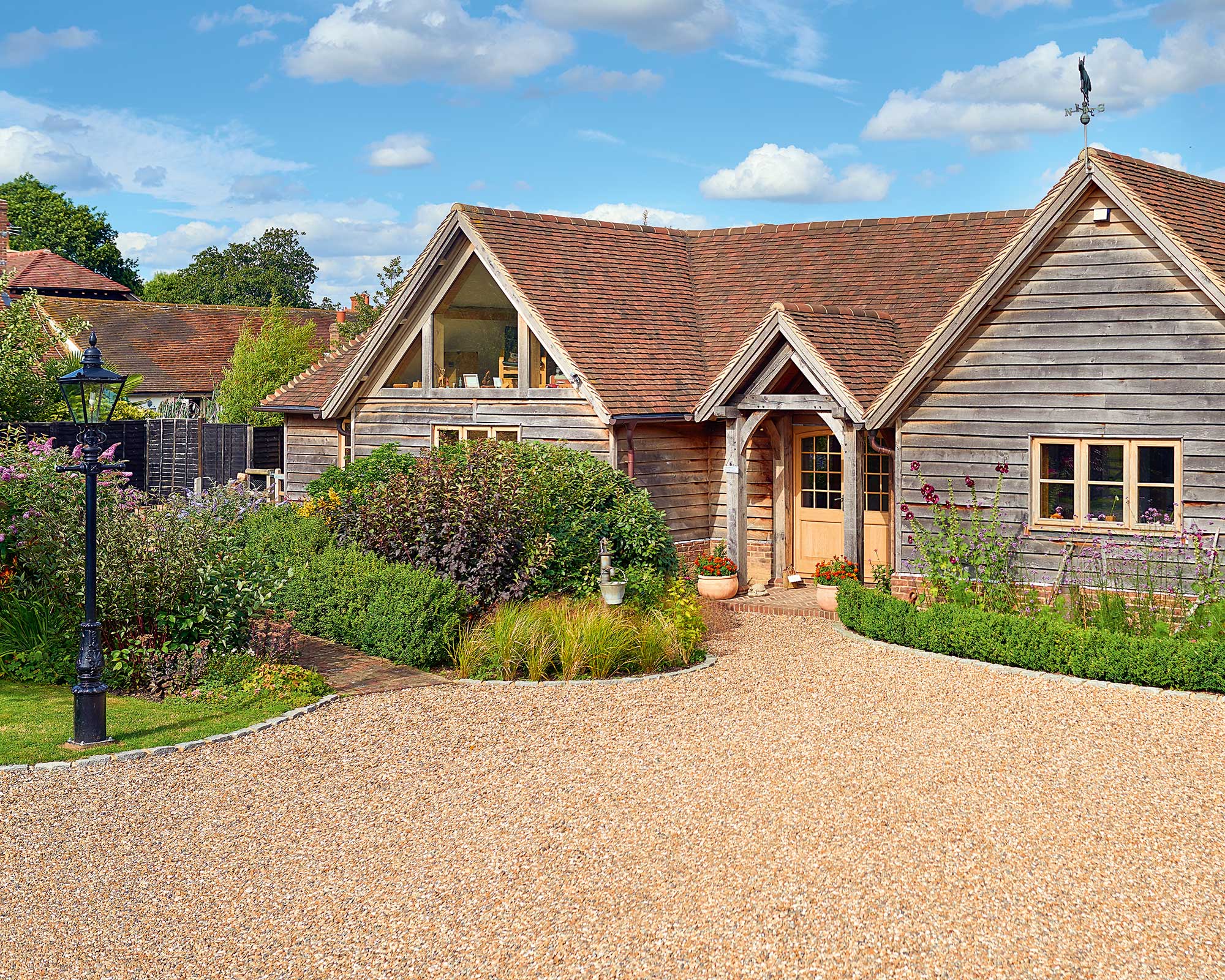
Gravel is one of the cheapest materials to use for your driveway design
(Image credit: Future)
Aesthetics are equally important. As Cass suggests, you should ask yourself if the driveway material enhances and complements your home. For instance, you may wish to pick a paving color that matches your exterior walls, or ties in well with your garage doors.
And, if you are laying a block paving, think about the pattern and the different effects it can have on the overall look. For instance, you could choose a stretcher bond, basketweave, or herringbone design.
There is maintenance to consider too: you'll want your driveway to look tip-top for longer, which means you'll need something durable and easy to clean. Most hard surfaces can be spruced up easily with one of the best pressure washers, while gravel can be replaced when it begins to look tired, or washed (although this is more time-consuming). You can find out more in our dedicated guide on how to clean a driveway.
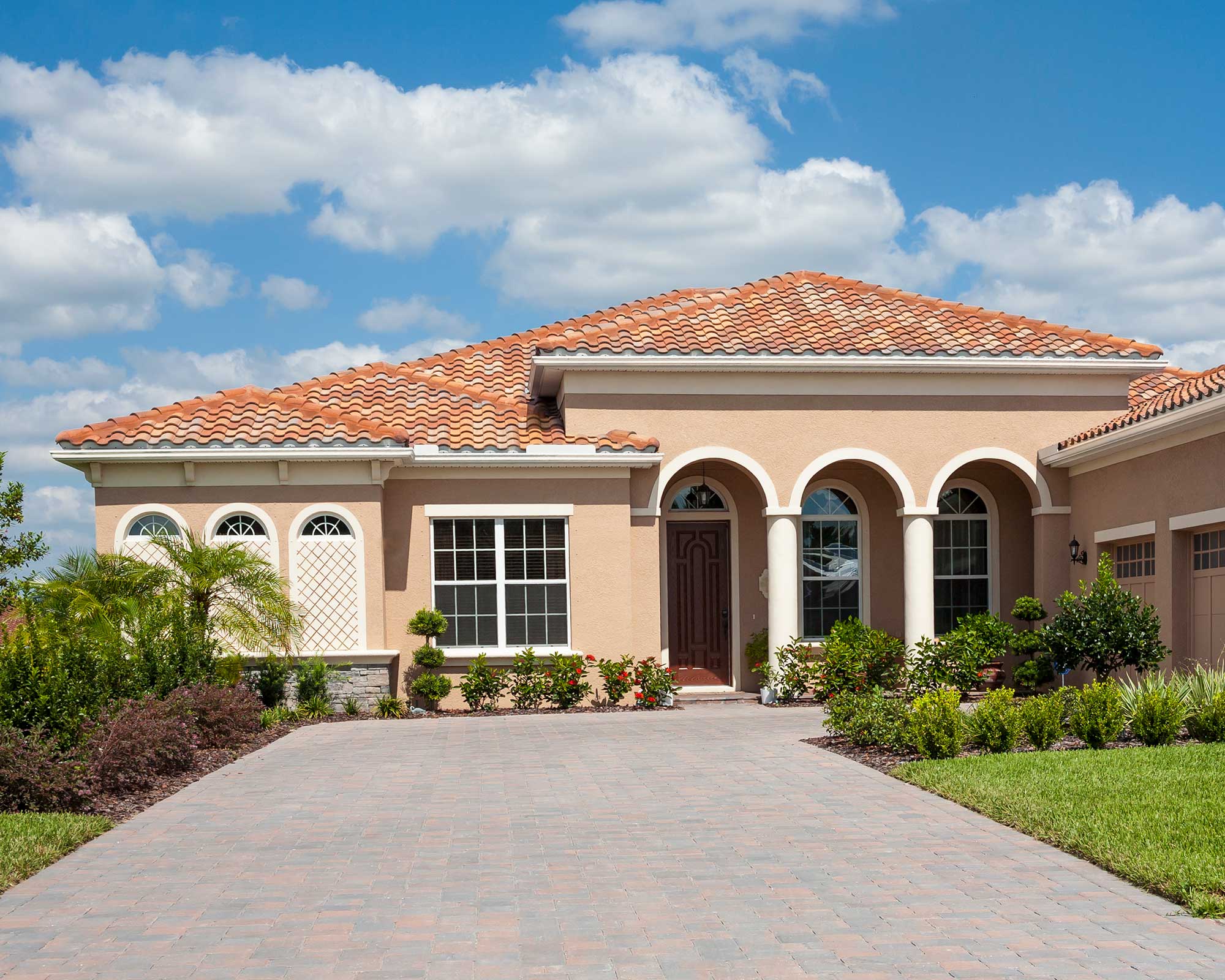
A hard-surfaced driveway like this one is easy to clean with a pressure washer
(Image credit: Marje/iStock/Getty Images Plus/Getty Images)
3. Factor in drainage
'You must have a drainage plan and capture all rainfall and surface run-off water within the boundary of your property,' says Cass. This will help prevent flooding on your property and the street.
He explains how there are a few options to do this, but the two most common are to use drainage channels and an underground soakaway crate to capture water, or to direct surface run-off into the garden – for instance, into lawns or flowerbeds. The latter tends to be cheaper and easier to do. Alternatively, you could opt for permeable paving.
You can find plenty more info on driveway drainage solutions in our guide.
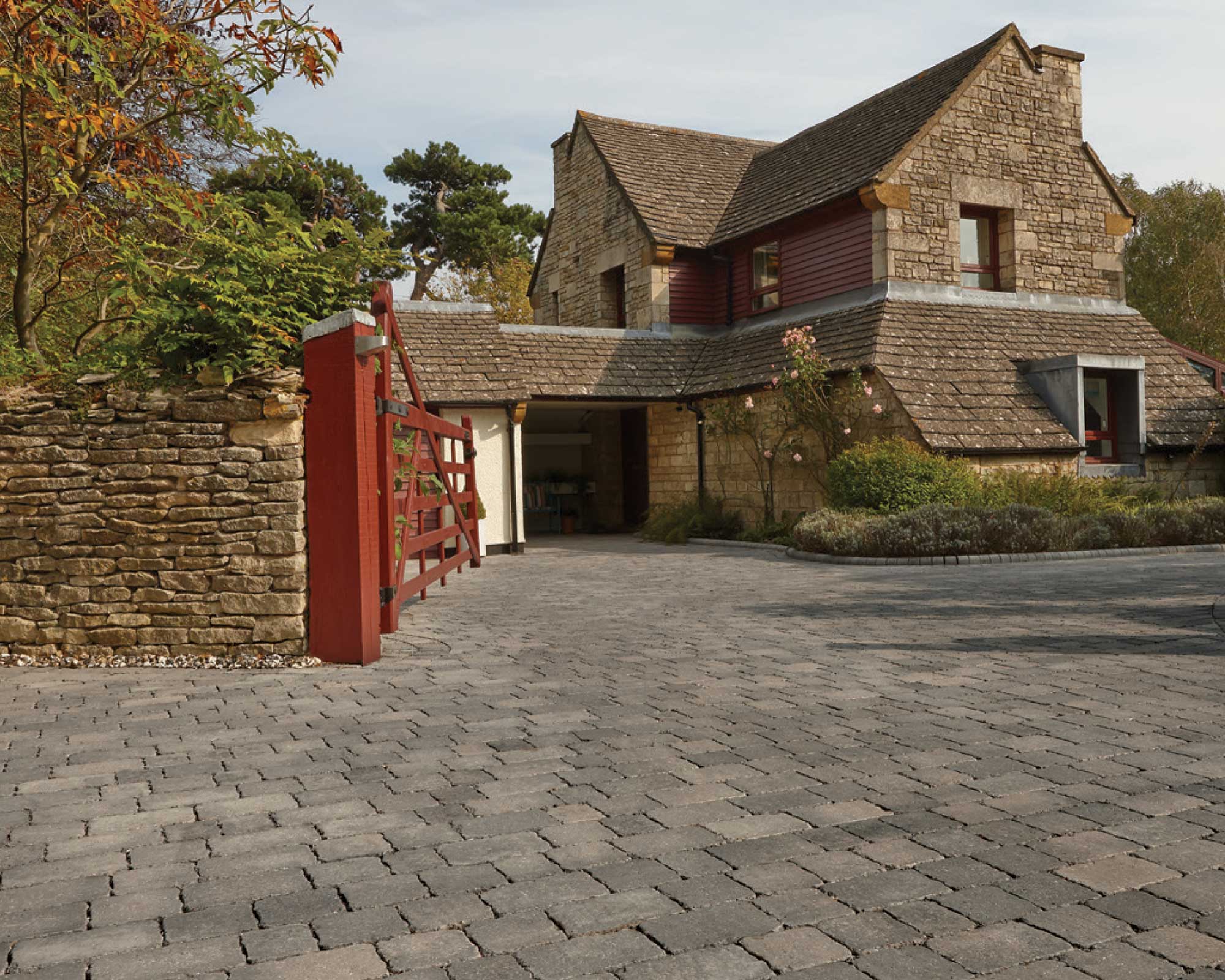
Permeable Woburn Rumbled Infilta paving from Bradstone (opens in new tab) will soak up rainwater run-off
(Image credit: Bradstone)
4. Add the perfect finishing touch with edging
As well as the materials of the driveway itself, you may also want to consider adding garden edging ideas to the feature. This can add a smart sense of definition and boost the overall aesthetic appeal.
Straight, chamfered, bullnose, high vs low, the colors and materials – these are all things to be considered, as says Cass. You may even want to go for a softer look and line your driveway with the best edging plants.
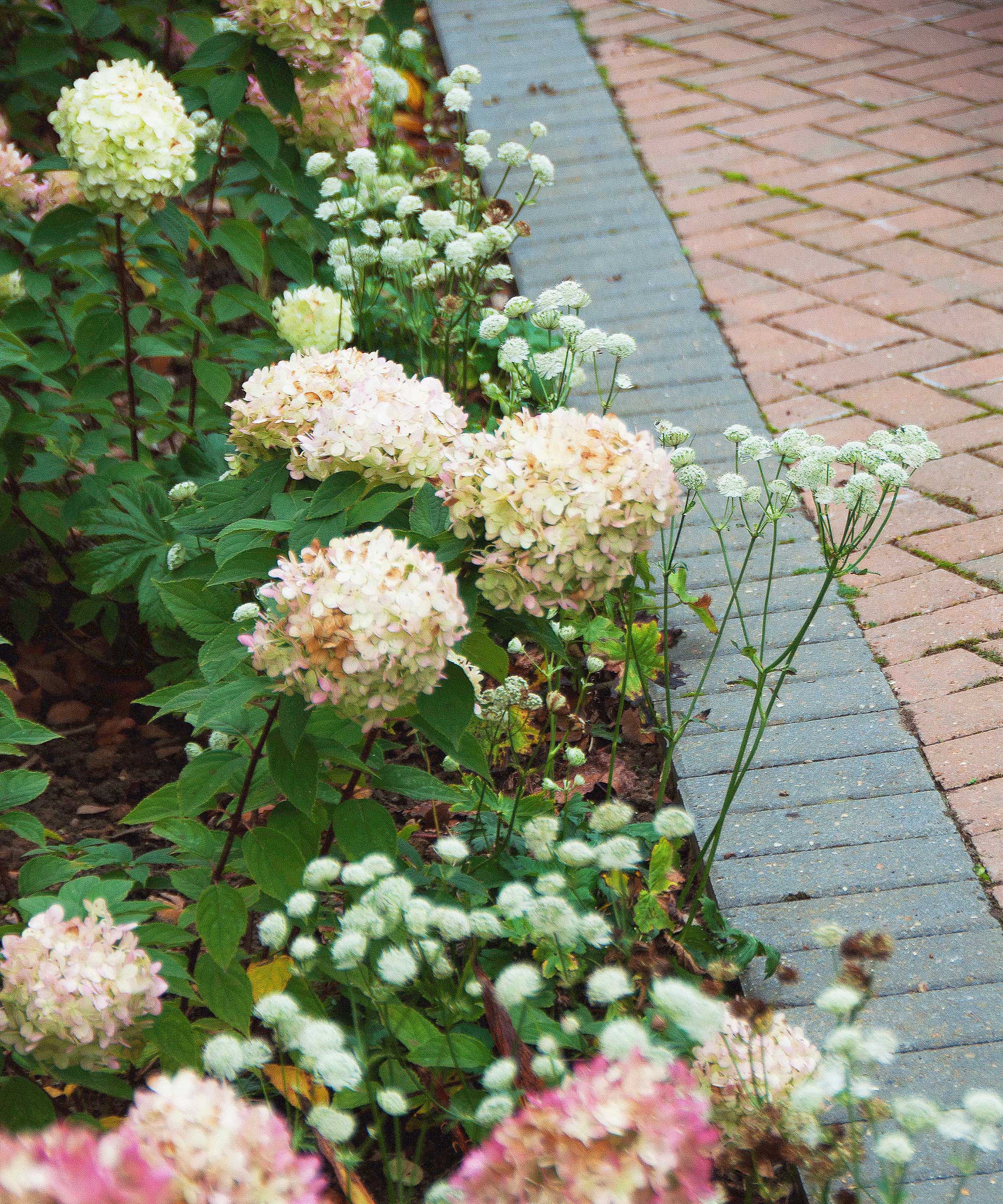
A neat edge defines this driveway from a flowerbed of astrantias and hydrangeas
(Image credit: Steffie Shields/Alamy Stock Photo)
5. Consider adding a gate
Adding a driveway gate is a great way to boost the security levels of your plot and keep pets and little ones safely away from the road. And there are lots of designs to choose from, so it's easy to pick one that will complement your garden theme.
You may even want to go a step further and opt for an automated gate. It's a simple way to make your life easier – just bear in mind that you may need to allow for underground motor chambers, vehicle loop detectors, and other aspects in your plan, as says Cass.
And, if want even more peace of mind, you could invest in one of the best outdoor security cameras, too. And don't forget about lighting, whether that's recessed, staked, or wall-mounted styles.
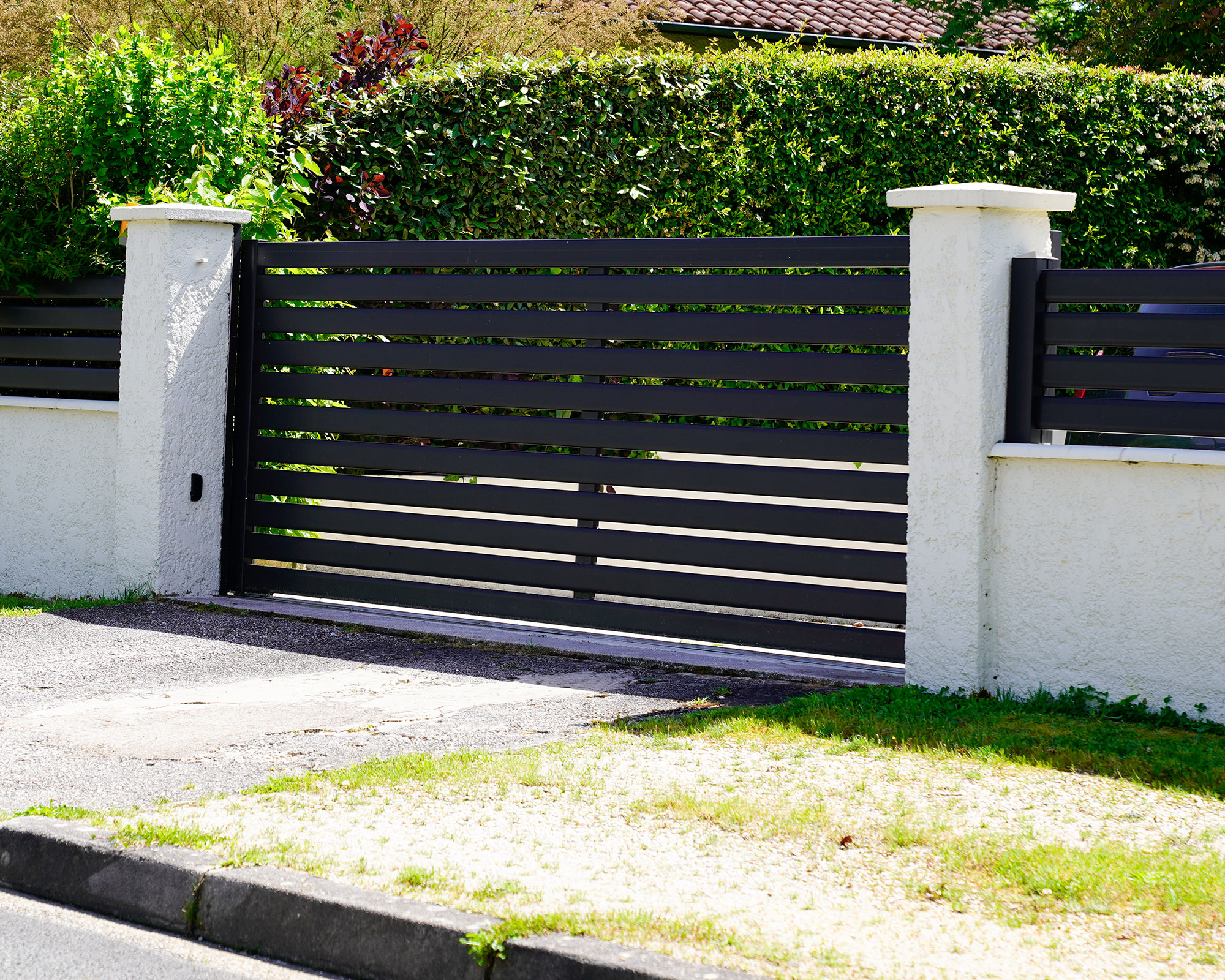
A gate will make your plot more secure
(Image credit: OceanProd/iStock/Getty Images Plus/Getty Images)
Is it difficult to build a driveway yourself?
Now you know how to design a driveway, you may be wondering if it's possible to build it yourself, too. 'If you are happy with manual labor and are handy, then doing a driveway should be within your capabilities,' says Cass.
'The difficulty and effort will depend on whether you need to do the groundwork for drainage, or whether your water capture regime will use the garden lawns and beds to absorb run-off rainfall. The former will need more excavation, which if done manually, could be difficult.
'You will need specific equipment and machinery such as a compactor plate (which can generally be hired if necessary), so make sure you are aware of these tools and equipment costs when planning the work, as a contractor will have these themselves.
'If you do plan a DIY driveway installation, find a good driveway installation guide and follow the processes step-by-step. You should be fine,' he says.
And if you're looking for more projects to elevate your garden, then our guides on how to lay a patio and how to build a rock garden have got you covered.
Source: https://www.gardeningetc.com/advice/driveway-design
0 Response to "trees and a driveway drawing"
Post a Comment